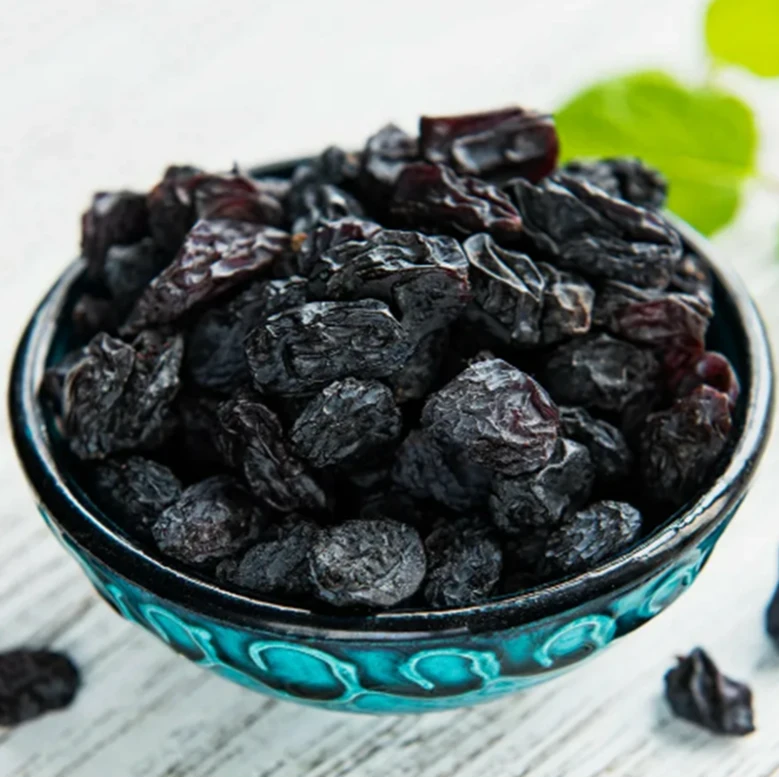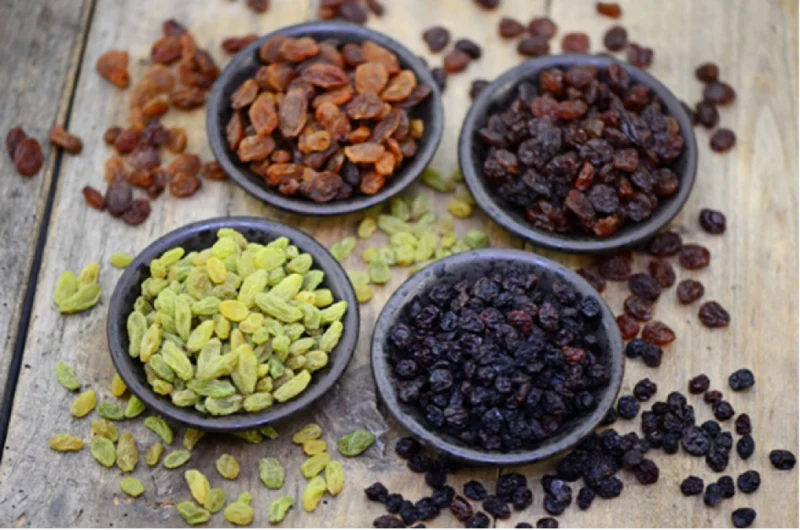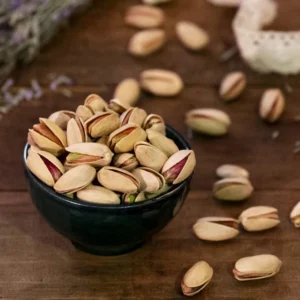Although there are many available options in the world of dried fruits, currants, sultanas, and raisins have a particular place in culinary hearts. These little treats are sometimes confused with one another, but they each have distinct qualities that affect their flavor, texture, and culinary uses. This article explores the origins, flavor profiles, and art of utilizing these dried fruits, offering an in-depth look into currants vs raisins vs organic sultana raisins .
Presentation of the Origins
While they are considered similar in most aspects, there are differences in raisins vs sultanas vs currants, let’s find out:
· Raisins
These chewy candies have a varied history and originate from several grape varietals. Popular varieties include white Thompson seedless grapes and black Corinth grapes. Drying methods range from simple sun-drenched procedures to sophisticated dehydration techniques. When compared to raisins that have been manually dried, sun-dried raisins frequently have a stronger flavor.
· Sultanas
Sultanas are mostly made from the Thompson seedless grape. They usually undergo a milder drying process than raisins, which gives them a lighter color, a softer texture, and a sweeter, more nuanced flavor profile.
· Currants
Unlike their raisin and sultana cousins, currants are not raisins made from small grapes. They are the dried fruit of a distinct grape species – the Zante currant. These tiny, dark jewels are prized for their intense sweetness and concentrated tartness.
A Symphony of Textures: Exploring the Tangible Delights
When it comes to exploring currants vs raisins vs sultanas’ tastes, there are some factors to be considered:
- Raisins: The textural experience of a raisin depends on the grape variety and drying method. Black raisins are denser and chewier, while organic golden raisins (sultanas) offer a softer and more yielding bite.
- Sultanas: As mentioned earlier, sultanas boast a softer and more delicate texture compared to raisins. Their lighter color reflects their higher moisture content, making them plumper and juicier.
- Currants: Currants stand out for their diminutive size and intensely chewy nature. They are significantly smaller than raisins and sultanas, delivering a concentrated burst of flavor in each bite.
Various Flavors: Exploring the Taste Profiles
Are there any specific differences between currants vs raisins vs sultanas in flavor? Let’s investigate:
Depending on the grape variety, raisins can have a wide range of flavors. The flavor of black raisins is typically stronger and deeper. Sultanas have a more fruity and sweet flavor profile with hints of citrus and honey. Known for their strong sweetness and subtle floral perfume, sultanas build upon the frity tones of raisins. They are a baker’s dream because of their delicate texture, which makes it easy for them to absorb flavors in baking applications. On the other hand, currants are a great alternative to the sugary taste of sultanas and raisins. Their flavor is highly acidic, almost sour, and carries subtle notes of spice and blackcurrant. They are the ideal complement to recipes that want a hint of complexity because of their distinct flavor profile.
The Art of Substitution: When Can You Swap One for Another?
Can i use raisins instead of sultanas? The good news for bakers and cooks is that raisins, sultanas, and currants can often be used interchangeably, depending on the desired outcome. Here’s more detail:
• Sultanas with Raisins
Because of their same sweetness and textures, these two are the most interchangeable. In many recipes Sultanas can easily be used in place of raisins, particularly in baked goods where their juicy and plump texture is more noticeable. Black raisins, however, can be a preferable option if a dish asks for a chewier texture or a richer molasses taste.
• Currants and Raisins:
You can replace the currants with raisins, but the flavor profile will change considerably. Currants have a stronger tartness than raisins, which could make the meal sweeter. In recipes calling for a small amount of currants, some bakers recommend using chopped raisins in place of half of the currants. Nonetheless, adding currants is advised for a more genuine taste experience.
• Sultanas and Currants
Similar to substituting raisins for currants, sultanas’ sweetness will overpower the tartness of currants. While a limited substitution might be possible for small quantities, currants are generally the preferred choice due to their distinct flavor profile.
Beyond Substitutes: Unique Culinary Applications
There are some unique culinary uses of currants vs raisins vs sultanas:
- Raisins: Their undertones of raisins can enhance trail mix and oatmeal, and they work well as a balancing spice in stews and curries. Because of their richer flavor, black raisins can improve the richness of savory sauces and chocolate treats.
- Sultanas: Due to their moist and plump nature, sultanas excel in baked goods like bread, cakes, and scones. They readily absorb flavors, adding a burst of sweetness and moisture without overpowering the delicate flavors of batters and doughs. Sultanas also pair beautifully with nuts and dried cranberries in granola and snack bars.
- Currants: With their intense tartness, currants are often used in baked goods to add a delightful complexity. They pair beautifully with apples, citrus fruits, and spices in pies, tarts, and crumbles. Currants are a classic ingredient in traditional British Christmas fruitcake, adding a unique depth of flavor. Additionally, currants are a popular ingredient in savory dishes like stuffings, chutneys, and Moroccan tagines, where their sweet-tart flavor adds a surprising and delightful dimension.
soaked dried apricots benefits
Conclusion
Raisins, sultanas, and currants, with their unique characteristics and interchangeable qualities, offer a world of possibilities for culinary exploration. Whether you are baking a cake or crafting a savory dish, understanding their differences and substitutability allows you to unlock a spectrum of flavors and textures in your kitchen creations.
Different Kinds of Raisins in Kourosh Foods
Kourosh Foods offers a diverse range of raisins, each with its unique flavor profile and nutritional benefits. Their selection caters to various preferences and dietary needs from golden sultanas to dark black raisins. Sultanas are known for their sweet and tangy taste, while black raisins offer a richer, more intense flavor. Whether you’re looking for a snack or an ingredient to enhance your favorite dishes, Kourosh Foods provides high-quality raisins to meet your needs. With their commitment to freshness and quality, you can trust that you’re getting the best raisins for your culinary adventures.







![Can You Eat Raisins on a Keto Diet? [ Are Raisins Good for Keto Diet]](https://kouroshfoods.com/wp-content/uploads/2025/12/can-you-have-raisins-on-keto-1-300x300.webp)


